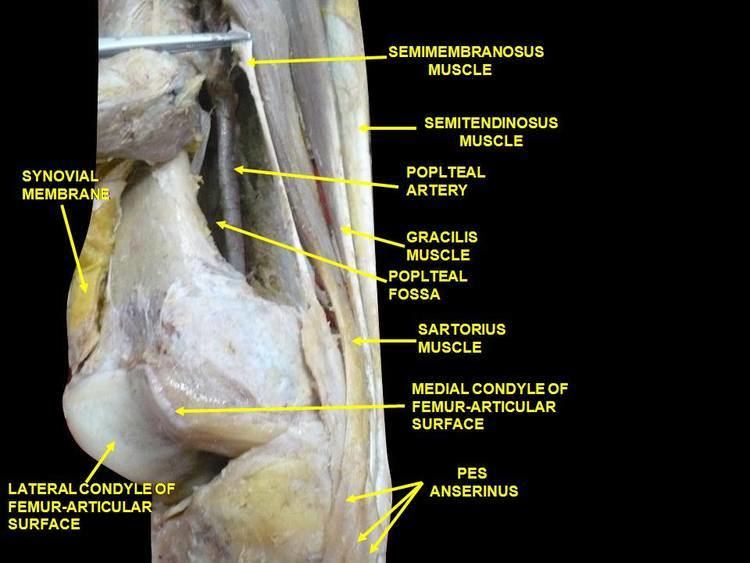Latin Pes anserinus FMA 311256 | Dorlands/Elsevier p_15/12630561 | |
 | ||
Pes anserinus ("goose foot") refers to the conjoined tendons of three muscles that insert onto the anteromedial (front and inside) surface of the proximal extremity of the tibia. The muscles are the sartorius, gracilis and semitendinosus sometimes referred to as the guy ropes. The name "goose foot" arises from the three-pronged manner in which the conjoined tendon inserts onto the tibia.
Contents
Structure
The three tendons, from front to back, that conjoin to form the pes anserinus come from the sartorius, gracilis and semitendinosus muscles.
The pes anserinus lies superficial to the tibial insertion of the medial collateral ligament of the knee.
Clinical significance
It is a cause of chronic knee pain and weakness ("pes anserine bursitis"). Pes bursitis is a condition in which the medial portion of the knee is inflamed. If the bursa underlying the tendons of the sartorius, gracilis, and semitendinosus gets irritated from overuse or injury, a person can develop this ailment. This condition usually occurs in athletes from overuse. This pathology is characterized by pain, swelling, and / or tenderness.
The semitendinosus tendon can be used in certain techniques for reconstruction of the anterior cruciate ligament.
